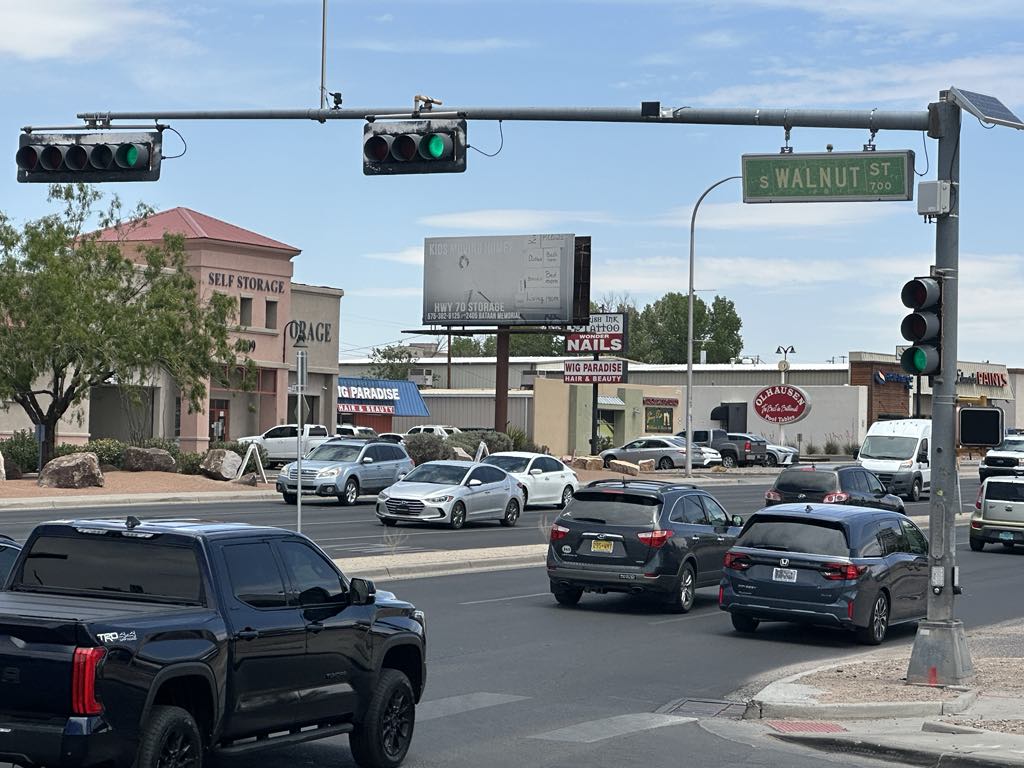-and-
The traffic signal timing plan, in use on Lohman Avenue between Walnut Street and Nacho Drive, uses AI to monitor and adjust signal timing in real-time during peak afternoon travel hours, 3 p.m. to 6:30 p.m.
Source: City of Las Cruces
Photo: Courtesy
The City’s Traffic Management Section, part of the Public Works Department, has implemented a traffic signal timing plan along a portion of Lohman Avenue that uses artificial intelligence to optimize traffic flow and improve safety during afternoon peak hours.

The traffic signal timing plan, in use on Lohman Avenue between Walnut Street and Nacho Drive, uses AI to monitor and adjust signal timing in real-time during peak afternoon travel hours, 3 p.m. to 6:30 p.m. It uses innovative technology and best practices to adjust timing of traffic signals to better accommodate current traffic patterns.
The goal is to reduce delays, improve vehicle progression and mobility of non-vehicle users such as pedestrians and bicyclists, while also lowering emissions.
This project is a collaboration with one of the nation’s premier engineering consultants Kimley-Horn and the pioneer of Intelligent Transportation System solutions, Econolite Systems. The City contracted with Kimley-Horn to re-time six intersections along the Lohman Avenue corridor.
The corridor presented unique engineering challenges due to the excessive traffic volume, particularly eastbound while also accommodating substantial pedestrian traffic.
The optimization of traffic signal timing in the first week has noticeably improved traffic flow, resulting in a significant reduction in median travel times. The eastbound traffic has seen a 6-mile per hour, or 53 percent, improvement and westbound traffic has seen a 2.7-MPH, 18 percent, improvement compared to its historical data from the previous 12 weeks.
The new traffic signal timing plan is anticipated to save $339,000 in fuel and $43,000 in emission costs within a year.
It’s also expected to significantly reduce Greenhouse emissions including carbon dioxide by 594kg, carbon monoxide by 8,320kg and nitrogen dioxide by 1,612kg per year.
The traffic signal timing plan is expected to produce qualitative benefits beyond those that are quantifiable. The plan is anticipated to improve mobility and reduced frustration, economic competitiveness, enhanced safety, increased public reception and reduced driver aggression.
The City began using the new traffic signal plan on April 22, 2025.





